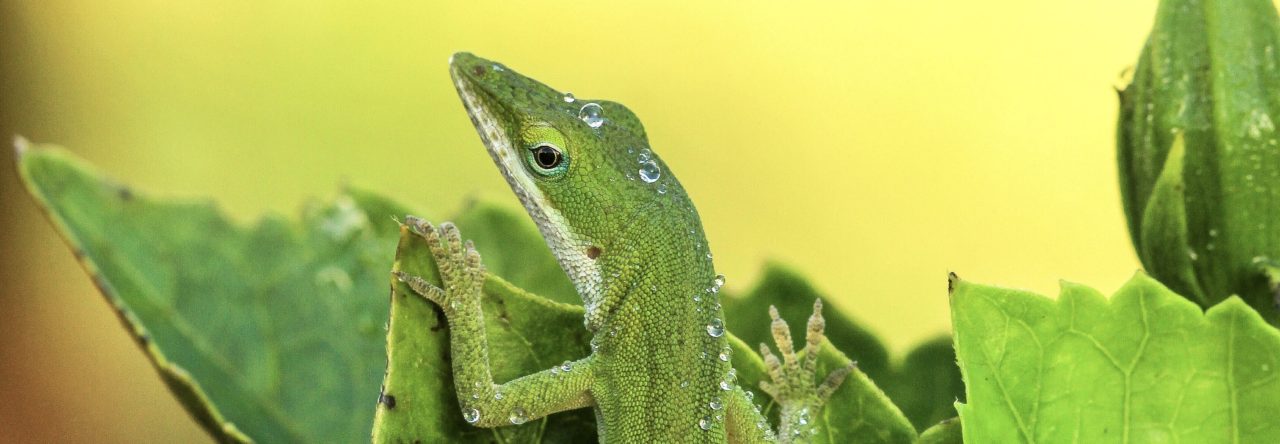
Gratuitous plug for a brand of sunscreen featuring a lizard.
Lizards not only sit in the sun to thermoregulate, but also to synthesize Vitamin D. It tends to reason, then, that the amount of basking might depend on the amount of Vitamin D in the diet. And so it does, at least in A. sagrei. But, not in the more shade-loving A. lineatopus. Read all about it in Gary Ferguson’s paper that appeared in the Journal of Herpetology at the end of last year.
Abstract:
In Jamaica, free-living male and female-sized Anolis sagrei are exposed to more natural ultraviolet-B (UVB) from sunlight than male and female-sized Anolis lineatopus. In the laboratory, we tested predictions derived from the hypothesis that Anolis possess a mechanism for behaviorally photo-regulating their exposure to UVB depending on their dietary intake of vitamin D3. Anolis sagrei voluntarily exposed themselves more frequently to visible and UVB light and received higher doses of UVB in an artificial light gradient when fed a low vitamin D3 diet for 6 weeks than when subsequently fed a high dietary vitamin D3 diet for 6 weeks. When we returned the anole’s diet to the low vitamin D3 regimen for a third 6-week period, UVB exposure remained lower than in the first 6-week period. This suggests an initial UV photoregulatory adjustment to high dietary vitamin-D3 but a slow return to greater reliance on UVB-induced endogenous vitamin D3 production. Conversely, while exposing themselves to UVB with similar frequency and doses as A. sagrei over the course of the 18-week experiment, A. lineatopus did not show the same decreased attraction to visible and UVB light in response to increased dietary vitamin D3. The response of A. sagrei in the laboratory to visible light without UVB was similar to their response to visible light with UVB. Therefore, the anoles appeared to be responding primarily to visible light. Anolis lineatopus may be unable to use dietary vitamin D3 to restore low vitamin D status.
- Evolution in Real Time on Lizard Island - March 23, 2025
- Spider Snags Adult Anolis osa - March 22, 2025
- An Homage to the Green Anoles of New Orleans - March 21, 2025


Leave a Reply